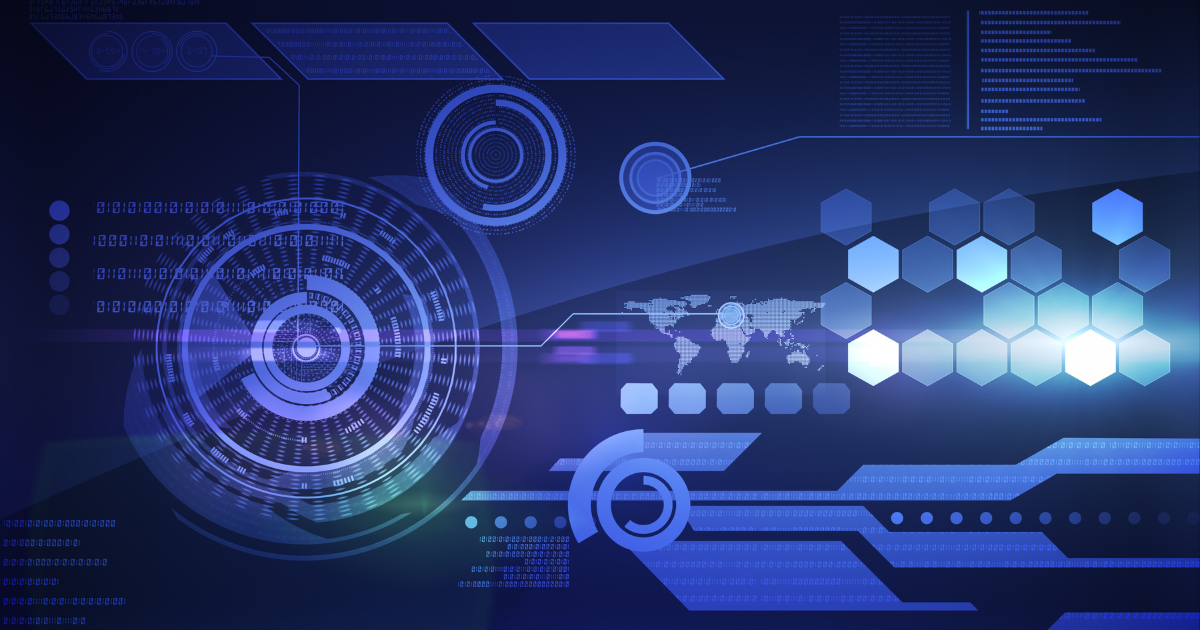
February 11, 2025
Top 10 practical applications of AI in the Aviation Industry
Author:

CSO & Co-Founder
Reading time:
14 minutes
The aviation industry, with its intricate network of airlines, airports, air traffic control, and various stakeholders, stands to benefit enormously from AI’s capabilities. From optimizing flight routes and predicting maintenance needs to enhancing passenger experiences and improving safety protocols, AI is already beginning to reshape how the industry operates.
This article explores AI’s impact on the aviation sector, examining both current implementations and future possibilities. We’ll delve into specific use cases across customer service, operations, and support functions, showing how AI is not just enhancing existing processes but enabling entirely new approaches to age-old aviation challenges.
According to IATA’s analysis, AI applications in aviation span from non-safety-critical tasks like customer service to safety-critical operations such as trajectory prediction and conflict detection.
Non-safety critical applications:
- Customer service operations (like chatbots and personalized services)
- Revenue management
- Flight scheduling optimization
- Passenger flow management
While these applications are important for efficiency and customer satisfaction, they don’t directly impact the safety of flights and operations.
Safety-critical applications:
- Trajectory prediction
- Conflict detection between aircraft
- Traffic advisory systems
- Separation management
- Autonomous flight capabilities
These applications directly impact flight safety and require extremely high levels of reliability and validation. The Eurocontrol report specifically notes that such safety-critical AI applications need rigorous certification processes and careful consideration of human factors.
The distinction is important because:
- Different validation and certification requirements apply based on safety criticality
- Non-safety critical applications can be developed and deployed more quickly
- Safety-critical applications require extensive testing and certification before operational use
- The human role and oversight requirements differ significantly between the two categories
This spectrum of applications demonstrates both the breadth of AI’s potential in aviation and the need for different approaches to development and implementation based on the safety implications of each use case.
However, implementing AI in aviation requires extreme cautiousness and experienced partners who truly understand both AI technology and aviation’s unique requirements. This can be particularly challenging in today’s environment, where the AI hype has led numerous IT companies to enter the market without the necessary domain expertise.
Aviation stakeholders must carefully evaluate potential AI partners, ensuring they have not only technical AI capabilities but also a deep understanding of aviation safety culture, regulatory requirements, and operational complexities.
The wrong choice of partner could lead to solutions that, while technically sound, may not meet the rigorous standards required in aviation or integrate properly with existing systems and procedures.

Read more: Addepto Case Studies from Aviation Industry

Benefits of AI in Aviation: Addressing Industry-Specific Challenges
The aviation industry faces unique challenges that make it particularly well-suited for AI applications. Let’s examine how AI can address some of these fundamental industry challenges:
Capacity crunch
The European airspace handled 11.1 million flights in 2019, and traffic continues to grow steadily. Traditional approaches to handling increased traffic – such as infrastructure expansion or workforce increases – are reaching their limits. AI offers new solutions through:
- Enhanced trajectory prediction accuracy, allowing for better airspace utilization
- Optimized sector configurations based on real-time demand
- Improved runway throughput through better sequencing and spacing
- Dynamic resource allocation for ground operations
- More accurate predictions of take-off times to enhance network planning
Complex operations
Aviation operations involve multiple stakeholders, diverse technologies, and intricate coordination requirements. AI helps manage this complexity through:
- Automated detection of patterns in massive operational datasets
- Real-time decision support for controllers and operators
- Integration of diverse data sources (weather, traffic, airport operations) for better decision-making
- Predictive maintenance to reduce unplanned downtime
- Enhanced cybersecurity through pattern recognition and threat detection
Environmental impact
With growing pressure to reduce aviation’s environmental footprint, AI enables:
- Optimization of flight trajectories for reduced fuel consumption
- Creation of more efficient ‘green’ routes
- Better prediction of weather patterns affecting flight efficiency
- Reduction of airport ground movements through improved planning
- Enhanced prediction accuracy to reduce holding patterns and unnecessary fuel burn
Safety enhancement
While aviation is already extremely safe, AI can further improve safety through:
- Early detection of potential safety issues through pattern recognition
- Enhanced monitoring of aircraft systems and infrastructure
- Improved conflict detection and resolution tools
- Better analysis of safety data to identify emerging risks
- Support for pilots and controllers in complex decision-making scenarios
Cost pressures
In an industry with typically thin profit margins, AI offers cost benefits through:
- Reduced operational costs through better resource utilization
- Improved maintenance planning and reduced downtime
- Enhanced revenue management and pricing optimization
- More efficient crew and fleet scheduling
- Reduced fuel consumption through optimized operations
AI in Aviation: Considerations & Challenges
However, successfully implementing AI in aviation requires careful consideration of several critical factors:
Safety and certification requirements
- The safety-critical nature of aviation operations demands rigorous validation of AI systems
- AI applications must meet strict certification standards, particularly for safety-critical functions
- New certification frameworks are being developed specifically for AI in aviation through organizations like EUROCAE WG-114/SAE G34
- Certification processes must address both the initial AI deployment and ongoing learning/updates
Explainability and trust
- AI decisions affecting safety must be transparent and understandable to human operators
- Controllers and pilots need to build appropriate levels of trust in AI systems
- AI systems must provide clear indications of their confidence levels and limitations
- The rationale behind AI recommendations should be traceable and auditable
Human factors integration
- AI should enhance, not replace, human capabilities in complex scenarios
- Clear procedures for human oversight and intervention must be established
- Training programs need to evolve to prepare aviation professionals for AI interaction
- The balance between automation and human control must be carefully managed
These principles are already being successfully applied in several operational environments.
For example:
- EUROCONTROL’s Maastricht Upper Area Control Centre has demonstrated the safety of its AI-powered pre-tactical traffic prediction tool, achieving a 47% improvement in horizontal accuracy prediction
- Heathrow Airport’s AI-based runway optimization system has shown significant improvements in landing capacity during low visibility conditions
- NATS has implemented machine learning algorithms to predict safety events like aircraft level busts or airspace infringements with demonstrable success
Top 10 Practical Applications of AI in the Aviation Industry
The aviation industry has moved beyond experimenting with AI to implementing practical solutions that deliver measurable benefits.
Here are the most significant applications where AI is already making a proven impact:
1. Traffic Prediction and Flow Management
EUROCONTROL, including its Maastricht Upper Area Control Centre (MUAC), is demonstrating how AI can enhance air traffic management. Through various AI initiatives, EUROCONTROL has reported achieving up to a 30% improvement in trajectory prediction accuracy. These AI systems process real-time surveillance data to predict aircraft trajectories, helping controllers optimize airspace usage and manage traffic flows more efficiently.
For instance, EUROCONTROL’s Artificial Intelligence Trajectory Prediction (AITP) project aims to improve flight plan consistency and reduce the number of false alerts. Additionally, AI tools like machine learning models are being used to detect air traffic control (ATC) events that could lead to safety occurrences, enhancing overall airspace safety. These capabilities contribute to better strategic planning and have the potential to reduce controller workload, although specific metrics for workload reduction are not publicly available.
2. Runway Operations Optimization
Heathrow Airport is trialing an innovative approach that combines ultra-HD 4K cameras with AI technology to address a critical operational challenge: maintaining landing capacity during low visibility conditions. When the 87-meter control tower is obscured by low clouds, the AI system, called AIMEE and developed by Searidge Technologies, interprets images from a network of 20 strategically placed cameras. It tracks aircraft and informs controllers when runways are clear, allowing them to decide on subsequent arrivals.
This system has the potential to help Heathrow reclaim up to 20% of lost capacity caused by low visibility, significantly reducing delays and improving punctuality for passengers. The ongoing trials aim to analyze the behavior of over 50,000 arriving aircraft to ensure accuracy and reliability before presenting findings to the UK’s Civil Aviation Authority. If successful, this technology could enhance safety and efficiency at Heathrow and potentially revolutionize air traffic management globally.
3. Aircraft Maintenance and Performance
Honeywell‘s AI-based system is transforming aircraft maintenance and performance monitoring by leveraging advanced predictive analytics. This system analyzes vast amounts of operational data to forecast maintenance needs and prescribe proactive actions, enabling airlines to shift from reactive to predictive maintenance. Airlines using Honeywell’s solution have reported substantial benefits, including a 30-50% reduction in operational disruptions related to auxiliary power units (APUs), a 10-15% decrease in costly premature removals, a low no-fault-found rate of 1.5%, and impressive predictive accuracy of 99%.
Furthermore, the integration of artificial intelligence and deep learning has led to a 35% reduction in operational disruptions for airlines, demonstrating the tangible impact of Honeywell’s innovative approach to enhancing operational efficiency and minimizing downtime.
4. Ground Operations Management
AI systems are revolutionizing ground operations by enabling dynamic resource allocation and real-time optimization. These systems process multiple data streams – from passenger flows to aircraft movements – to optimize gate assignments, predict turnaround times, and improve ground movement efficiency. The technology helps airports manage their most constrained resources more effectively, reducing delays and improving the passenger experience.
5. Safety Monitoring and Analysis
I’s pattern recognition capabilities have found crucial applications in aviation safety. Systems now automatically analyze vast amounts of operational data to identify potential safety issues before they become critical. This includes advanced data analysis techniques that can process diverse information sources, including weather patterns and operational metrics, to enhance situational awareness and risk prediction. AI-driven pattern recognition in safety data can identify emerging risks that might be missed by traditional analysis methods, allowing for more proactive and comprehensive safety management in aviation.
6. Air Traffic Controller Assistance
The MALORCA project demonstrated how AI can support controllers while reducing their workload. By implementing speech recognition for controller communications, the system achieved command recognition rates of up to 92% for Prague and 85% for Vienna approach areas, automating routine system inputs and allowing controllers to focus on more critical tasks12. This technology has shown particular success in these locations, significantly improving the automation of controller instructions and reducing the need for manual data entry
7. Remote Tower Operations
Estonia’s Air Navigation Services (EANS) implementation of remote tower operations showcases how technology can enhance situational awareness. Their system uses high-definition cameras to provide a 360-degree panoramic view of the aerodrome, which is transmitted to the Remote Tower Center (RTC) in Tallinn. The visual feed can be overlaid with additional information from surveillance equipment and infrared cameras, improving situational awareness in various light and weather conditions. This capability is particularly valuable for multiple remote tower operations, as controllers can monitor and manage several airports simultaneously. Estonia has successfully implemented this system at Tartu and Kuressaare airports, demonstrating its effectiveness in modern air traffic management.
8. Disruption Management
Advanced AI systems are transforming how airlines handle operational disruptions by analyzing multiple factors such as available aircraft, crew, passenger connections, and other resources to optimize recovery plans. These systems have proven particularly valuable during weather events and other operational challenges, enabling airlines to minimize the impact on passengers while reducing costs through real-time resource optimization and automated decision-making.
9. Cybersecurity Enhancement
As aviation systems become increasingly interconnected, AI plays a crucial role in cybersecurity. AI systems provide real-time threat detection by analyzing network patterns to identify anomalies that may signal potential security threats. These systems also enable automated responses, such as revoking access or escalating incidents to human operators, ensuring swift mitigation of risks. This capability is particularly vital for protecting safety-critical aviation systems and maintaining the integrity of operational data in an era of growing cyber threats.
10. Flight Planning Optimization
AI has enabled a new level of sophistication in flight planning, analyzing multiple variables, including weather patterns, airspace constraints, and fuel efficiency, to optimize routes. These systems can adapt plans in real-time based on changing conditions, helping airlines reduce fuel consumption and improve on-time performance while maintaining safety margins.
Generative AI Applications Transforming Aviation
While artificial intelligence has been transforming aviation for years, Generative AI represents a fundamental shift in how technology can contribute to the industry. Unlike traditional AI, which excels at analyzing patterns and making predictions from existing data, Generative AI can create entirely new solutions and approaches to aviation’s complex challenges.
From revolutionizing aircraft design to enhancing passenger experiences, Generative AI is proving to be a powerful tool that goes beyond optimization to enable true innovation. Its ability to create, rather than just analyze, opens up new possibilities for solving long-standing industry challenges and developing novel approaches to operations, maintenance, and service delivery.
The following list highlights the most significant applications where Generative AI is already making an impact in aviation, demonstrating how this technology is improving existing processes and enabling entirely new capabilities across the industry.
Aircraft Design Innovation
Generative AI optimizes aircraft designs for weight reduction and fuel efficiency, creating innovative solutions like advanced winglets and blended wing body designs. Unlike traditional optimization, it can generate entirely new design approaches while meeting specific performance and sustainability targets.
Predictive Maintenance
Going beyond traditional analytics, Generative AI creates comprehensive maintenance models by analyzing historical data and real-time sensor information. It generates detailed maintenance procedures and predicts potential failures, helping minimize downtime and optimize repair schedules.
Aerodynamic and Flight Optimization
The technology enables engineers to generate and test novel designs for optimized airflow and reduced drag. It also advances autonomous navigation capabilities, enhancing autopilot systems and route optimization for safer, more efficient flights.
Supply Chain Intelligence
Generative AI offers predictive solutions for inventory management and demand forecasting, actively generating alternatives during disruptions. This proactive approach helps ensure parts and materials availability even during unexpected challenges.
Enhanced Passenger Experience
The technology creates personalized experiences through:
- Customized cabin interior designs
- Optimized seating configurations
- Tailored service recommendations
- Advanced customer service chatbots providing real-time assistance
Training and Simulation
Generative AI produces realistic, immersive training simulations for pilots and crew, creating diverse scenarios that enhance skills and preparedness. This capability enables more comprehensive and adaptable training programs.
The key distinction of Generative AI in applications is its ability to create new solutions rather than just analyze existing data. This represents a significant advancement over traditional AI applications, enabling the aviation industry to optimize existing processes and develop entirely new approaches to long-standing challenges.
This focus on generation and creation sets these applications apart from traditional AI implementations, offering the potential for more innovative and comprehensive solutions to aviation’s complex challenges.
Conclusion: AI’s Transformative Impact on Aviation
The implementation of AI in aviation represents a significant evolution in how the industry approaches its fundamental challenges. From traffic management to aircraft maintenance, AI solutions are delivering measurable improvements in safety, efficiency, and operational performance.
The dual nature of AI applications in aviation – spanning both non-safety-critical and safety-critical operations – demonstrates the technology’s versatility while highlighting the need for careful, context-appropriate implementation approaches. Where AI supports customer service and revenue management, rapid deployment and iteration are possible. However, in safety-critical applications like trajectory prediction and conflict detection, rigorous certification processes and human oversight remain essential
The transition to more advanced AI applications, particularly Generative AI, marks a new frontier in aviation innovation. While traditional AI excels at optimization and prediction, Generative AI’s ability to create novel solutions – from aircraft designs to maintenance procedures – opens new possibilities for addressing long-standing industry challenges.
Key success factors for AI implementation in aviation include:
- Careful selection of experienced partners who understand both AI and aviation requirements
- Rigorous validation and certification processes for safety-critical applications
- Clear procedures for human oversight and intervention
- Transparent and explainable AI systems that build trust with operators
As the aviation industry continues to face challenges in capacity, environmental impact, and operational complexity, AI technology – both traditional and generative – will play an increasingly important role in shaping solutions. The key lies in balancing innovation with aviation’s unwavering commitment to safety and reliability.
References:
- European Aviation Artificial Intelligence High Level Group, The FLY AI Report. Demystifying an AI IN AVIATION
- Exploring The Fundamentals, Threats And Opportunities Of Artificial Intelligence (Ai) In The Aviation Industry, White Paper | June 2018nd Accelerating Ai In Aviation/Atm, 5th March 2020, Pdf.
Category:





